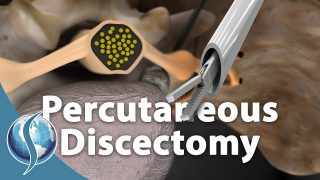Low Back Pain
Low Back Pain
80% of the worlds population will have at least one episode of low back pain in their life, that will cause at least a temporary period of significant impairment.
Often times, you will contact your primary care physician for the initlal complaints of back pain. Please see the ANIMATIONS on degenerative disk disease and sciatica.
Fortunately, the vast majority of patients will recover with time and patience. Initial assessment must include a good history of the patient. Medical co-morbidities such as prior neoplasm, diabetes, osteoporosis, and infectious diseases are important in assessing the need for more diagnostic testing. History of recent trauma will also increase the possible need for testing. In addition, a good review of systems including any recent fevers, sweats, falls, accidents, and any loss of bowel or bladder complaints should be discussed in detail. In regards to the bowel or bladder changes, often times patients are embarrassed to discuss this. But, if there is any true loss of function, that is a true emergency and must be discovered.
On physical exam, palpation of the mid-line of the spine is important to rule out a fracture. Paraspinal tenderness or spasm is common, and although painful, not unexpected in patients with LBP. A good neurologic exam is important for identification of radiculopathy. A major motor deficit is a concern, and if present, should trigger a consultation with a spine specialist and a diagnostic workup. Reflex deficits and sensory deficits without motor weakness do not necessary trigger a spine specialist consultation.
If a patient with LBP does not have any radicular component, and the history is without any concerns for fracture, neoplasm or infection, these patients can be initially treated without diagnostic testing. Many studies on the efficacy of x-rays or MRI’s conclude that these studies are not necessary, or beneficial during the initial acute phase of patients without concerns for bladder/bowel dysfunction, fracture, neoplasm or infection.
For the first 2-4 weeks, treatments including anti-inflammatory medications, home stretching exercises, physical therapy, chiropractic care, massage, and judicious use of narcotics should be considered. As long as patients are making progress, these therapies can then be slowly tapered. As patients improve, consider counseling on the effects of exercise, weight control, smoking and osteoporosis.
Despite the above treatments, if the patient does not improve after 4-6 weeks, consider consultation with a spine specialist.
Last modified: October 22, 2019









